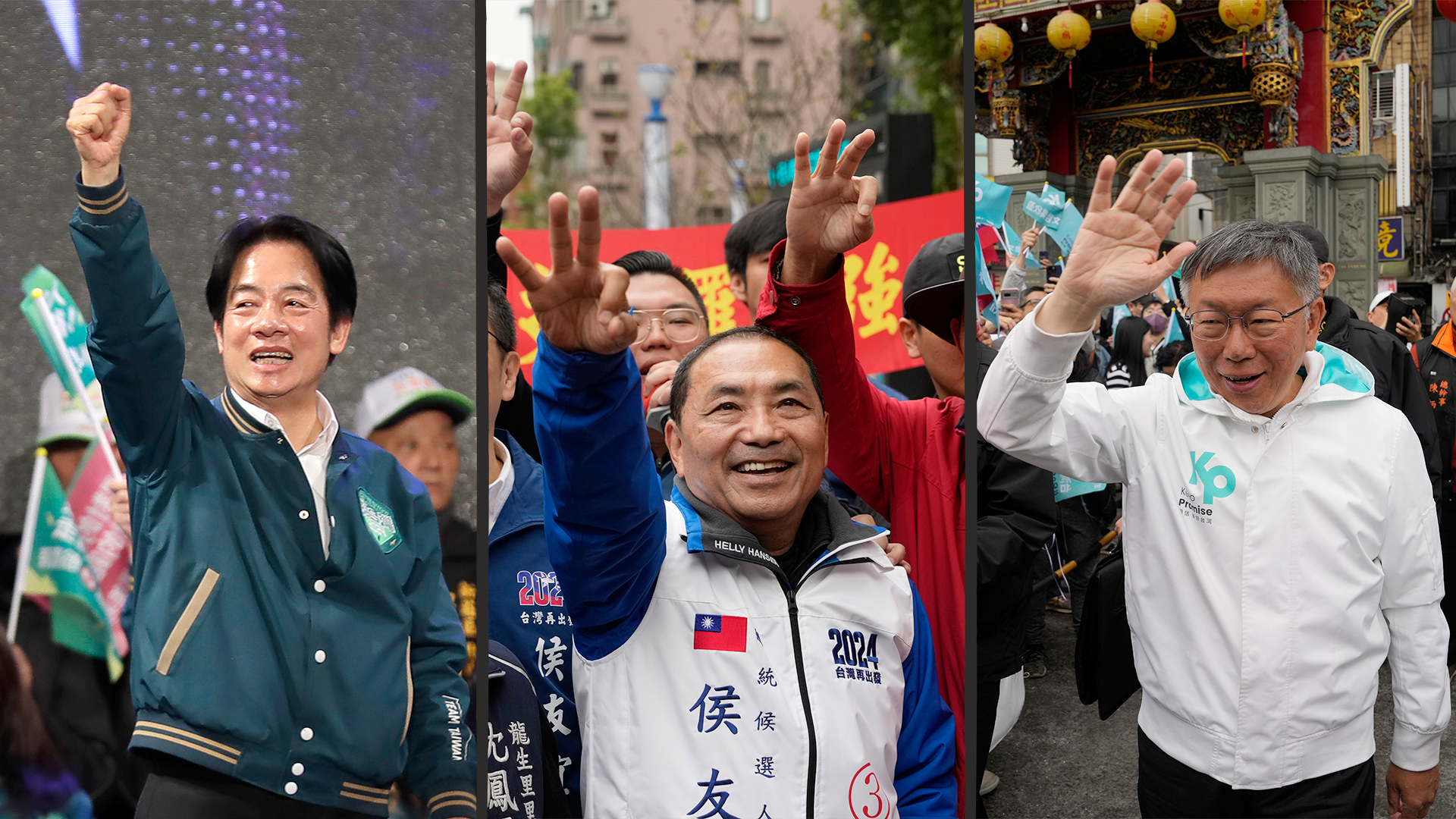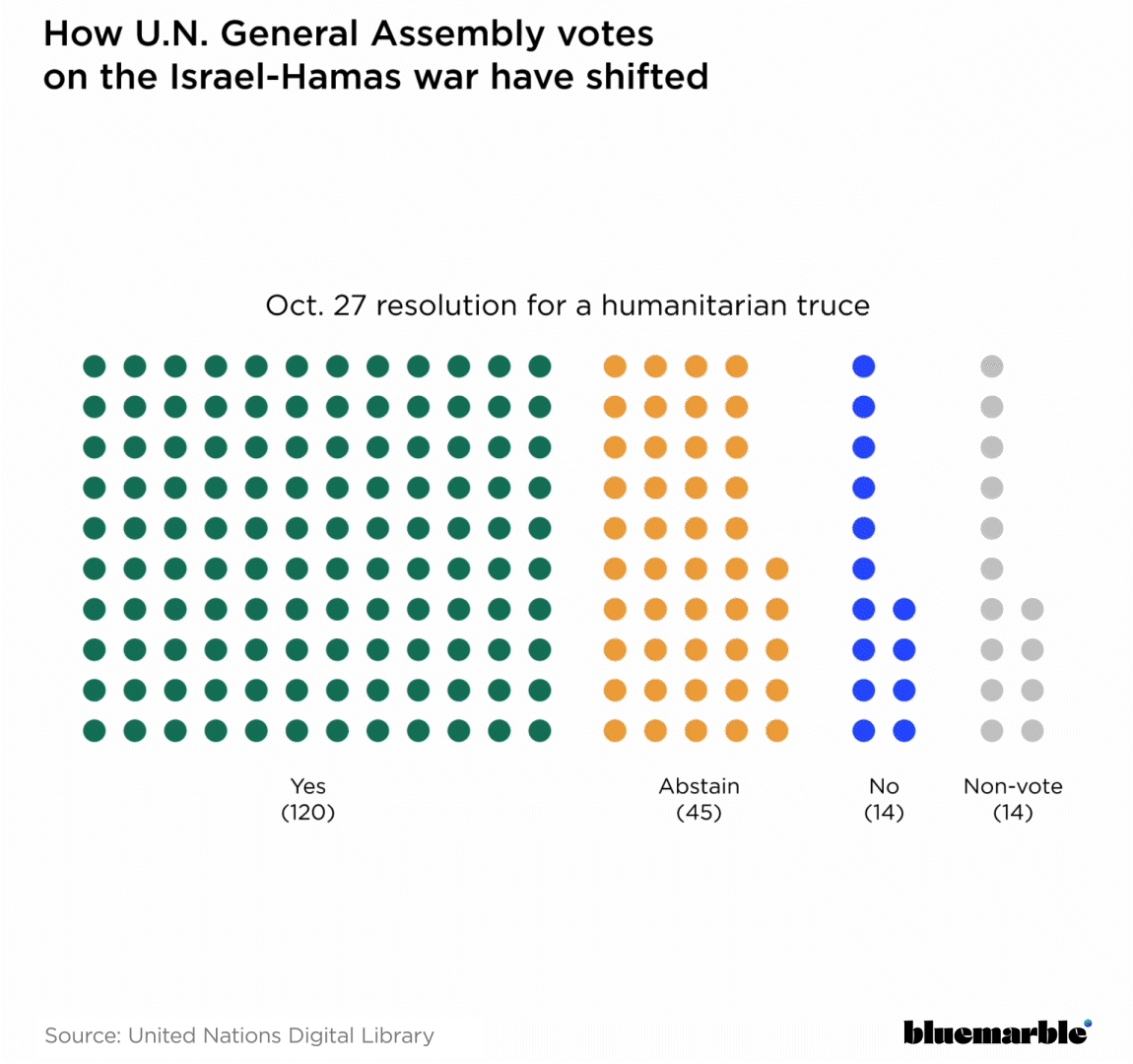Young Taiwanese voters could swing the upcoming presidential election, deciding the island’s future relationship with China
In short: Taiwan’s Jan. 13 presidential election could decide the course of the self-governed island’s relationship with China, which claims it as part of its territory. At least a quarter of Taiwan’s eligible voters are between 20 and 40 years old, a group that overwhelmingly supports an independent Taiwan. Taiwan has accused China of attempting to intimidate voters ahead of the election.
How could the youth vote affect Taiwan’s election?
At least a quarter of Taiwan’s eligible voters are between 20 and 40 years old, including just over 1 million first-time voters between the ages of 20 and 23. According to recent polling, young Taiwanese people overwhelmingly support an independent Taiwan and are less likely to support economic relations between Taiwan and China.
With young people making up such a large part of the electorate, it’s expected their vote will play an important role in the election’s outcome.
But young Taiwanese activists who talked with Focus Taiwan said that how young people will vote depends on whether they believe a candidate will make their lives better, especially when it comes to wages, housing costs, and relations with China.
Among young Taiwanese voters’ chief concerns is the economy, which grew by just 1.61% in 2023. Young voters say wages aren’t keeping up with the cost of living. The minimum wage in Taiwan was recently raised to $5.72 per hour, or for those on a monthly wage, to $859 per month, about a 4% increase for both. Meanwhile, rent prices are at their highest in nearly three decades.
Candidates must also motivate young people enough to travel to cast their vote, these same activists said.
Taiwan does not have an electronic voter system or allow for absentee voting, so people must cast their vote according to their “household registration.” For many young people, that means returning to their hometown.
Unlike in the U.S., where a voter 18 or older who’s away from home could either cast an absentee ballot or register to vote in their college town, Taiwanese voters are automatically registered at 20 years old based on their legally designated household. So, a 20-year-old Taiwanese student who lives on campus miles away would have to travel to their hometown to cast their vote.
Despite voting challenges, Taiwan has a comparatively high voter turnout compared to the U.S. In the Taiwanese 2020 presidential election, 74.9% of registered voters cast their vote. Compare this with the U.S. 2020 presidential election, which had a 66.8% turnout rate, the country’s highest voter turnout of the century.
In an interview with CNN, 26-year-old student Carrie Wang said, “For me, I think it is most important to choose a president who can best move our country forward in the international world.”
Why is this year’s presidential election so important?
Along with the huge number of first-time voters expected to turn out, this election is important because it could affect Taiwan’s relationship with China, which has been increasingly aggressive in the South China Sea, which both countries claim as their territory.
The Overview newsletter
The news you need to navigate our world, delivered to your inbox every weekday afternoon.
In November, a Chinese official and director of the State Council’s Taiwan Affairs Office referred to the upcoming vote as “a choice between war and peace, prosperity and decline,” a sentiment later repeated by the head of China’s Association for Relations Across the Taiwan Strait, Zhang Zhijun, in a New Year’s message.
Who are the candidates?
Three presidential candidates are on the ballot. From Taiwan’s two major parties, there is current Vice President Lai Ching-te of the Democratic Progressive Party and New Taipei City Mayor Hou You-ih of the Kuomintang, also known as the Nationalist Party. There is also a third-party candidate: Ko Wen-je from the Taiwan People’s Party.

The DPP currently holds the presidency and supports an independent Taiwan. The KMT opposes independence and believes in the so-called 1992 Consensus, an agreement made between Chinese and KMT officials that acknowledged Taiwan and China as part of “one China,” with each side allowed to interpret what that China is. Taiwan’s current president, Tsai Ing-wen, has rejected the consensus.
Since Tsai came into power in 2016, China has refused nearly all communication with Taiwan because of the DPP government’s rejection of the “one China” principle. China said Taiwan would need to concede its sovereignty before reengaging.
The DPP’s Lai, the current frontrunner, said he is open to reengaging with China “under the principles of equality and dignity.” Lai has also said that he would build up Taiwan’s defense capabilities and strengthen relationships with other democracies.
KMT candidate Hou said he opposes Taiwanese independence but would protect Taiwan’s free democracy while working with China under the “one China” policy.
TPP candidate Ko, a surgeon and former mayor of Taipei, likened the relationship between China and Taiwan to that of a tumor that should be managed but largely left alone.
Why does the U.S. care about the relationship between China and Taiwan?
The U.S. has maintained a delicate balance; it does not officially recognize Taiwan as a sovereign nation – which would stoke tensions with China – but has an agreement with Taiwan that requires that the U.S. provide the island with defensive military equipment.
China considers Taiwan, which has been self-ruled for nearly 75 years and a democracy since 1996, to be a “breakaway province that will eventually be under Beijing’s control.” This is because in 1949, after fighting between the Chinese Communist Party and the KMT, the KMT fled to Taiwan and claimed Taipei was China’s temporary capital.
For two decades after 1949, international actors, including the U.S. and the U.N., considered Taiwan to be the official representation of China. But in 1971, the U.N. voted to admit mainland China and expel Taiwan.
In 1979, the U.S. recognized mainland China as the only government of China, and currently operates under a “one China” policy where it “recognizes Beijing as the government of China and maintains unofficial relations with Taiwan.” The U.S. holds the position that it does not support an independent Taiwan.
But the U.S. has had an agreement with Taiwan since 1979 that requires the U.S. to provide Taiwan with defensive military arms and to potentially come to Taiwan’s aid if any countries attacked it.
Taiwan’s defense minister, Chiu Kuo-cheng, said in February that China has been ramping up its efforts to control Taiwan following Russia’s invasion of Ukraine in February 2022.
Ahead of Taiwan's elections on Jan. 13, China has reaffirmed it would use military force to take control of Taiwan, threatened to put new trade regulations on Taiwanese goods, and launched high-altitude balloons over the island; China claims they’re just weather balloons, but others speculate they’re used for spying.
China also recently told the U.S. that it would “never compromise” on its claim that Taiwan is part of China.
Read next: The U.S. doesn't recognize Taiwan as a sovereign nation, so why is it arming the island?
Your tax-deductible donation enables us to break down the most complex global issues so you have the info you need to build a better world.
